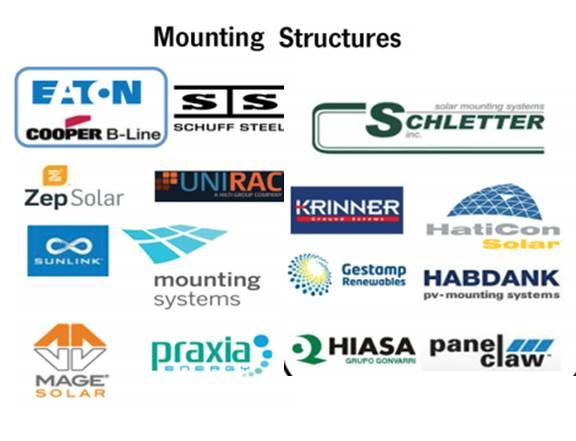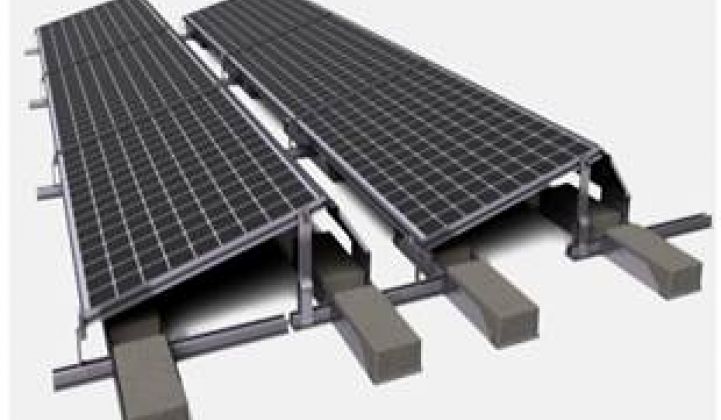An unnamed solar company won praise for its technology during SolarCity's recent Q1 2013 earnings call.
“One of the biggest kind of step-function changes that is currently underway is the movement away from rail-based installation hardware to installation hardware that doesn’t depend on the rail,” SolarCity (SCTY) co-founder and CTO Peter Rive said in answer to a question about cost-cutting innovations in residential rooftop solar.
Rail-free installation facilitates that step-change in installation time and costs, Rive explained, because it “dramatically reduces the number of cutting, drilling and transportation operations that are required in order to be able to install solar.”
“That is Zep Solar,” Zep Executive VP Daniel Flanigan said. It is a matter of public record, Flanigan explained, that both SolarCity and Vivint Solar, another of the biggest U.S. residential rooftop installers, use Zep technology.
“Zep is basically, though not categorically, the only rail-free system supplier, Flanigan said. There are niche rail-free applications, but for the bulk of rail-free systems on typical U.S. homes there are effectively no other providers.”
The GTM Research/Solvida Energy Group report Global Solar PV Balance of System (BOS) Markets: Technologies, Costs And Leading Companies, 2013-2016, sampled 25 of the hundreds of commercial and residential rooftop installation hardware suppliers, highlighting innovations by Zep Solar, Solon, and Solar Flex Rack.

Source: The GTM Research/Solvida Energy Group report Global Solar PV Balance of System (BOS) Markets: Technologies, Costs And Leading Companies, 2013-2016
Based on the market shares of its customers, Flanigan “guesstimated” that Zep Solar supplied about 10 percent of U.S. 2012 rooftop residential installation hardware and is on track to provide 30 percent in 2013.
With Zep technology, Vivint is achieving “previously unheard of levels of installation efficiency,” Flanigan said. The firm is "installing two and sometimes three residential systems in one day with a three-person crew.” Any installer can install “more kilowatts in a day,” he added. “We introduce additional velocity into operations.”
Zep licenses its grooved-frame design to module manufacturers that then produce Zep-compatible versions along with their standard products. Zep’s mounting and grounding hardware locks into the groove. That forms stable module units that don’t require conventional mounting rails, eliminating the logistics and labor of handling them. It also allows for Zep’s auto-grounding and streamlined leveling features.
"Rail-free installation makes the term 'racking' somewhat obsolete,” Flanigan said. “We think of ourselves as an installation technology platform.” Yet Zep’s products and warranties “adhere to industry standard criteria,” Flanigan noted.

Yingli (YGE), Sharp, Trina (TSL), Canadian Solar (CSIQ), Hanwha (HSOL), and Suniva are among the many module manufacturers that market Zep compatible modules, and SolarEdge, Enphase (ENPH), and Tigo all make Zep-compatible power electronics, according to the firm's website.
Flanigan said Zep is continuously “in discussions” with installers that “want to make sure they are not disadvantaged and make sure their cost structure is as good as [those of] their fierce competitors.” And, he went on, “We are working with about a dozen very large-scale installers in some stage of piloting or implementing their transition to the Zep technology platform.”
Later this summer, Flanigan said, Zep will launch a ballasted, rail-free, commercial flat-roof product. “It will be very fast-installing, totally tool-free, and auto-grounding with stackable parts.”
CTO Jack West evolved Zep Solar’s rail-free concept while working as a solar system designer and installer in the late 1990s. The company now has headquarters in northern California and parallel supply chains in the U.S. and the Shanghai area. “We don’t operate factories; we manage supply chains,” Flanigan said.
“After briefly hitting a high of 7.3 gigawatts in 2012, the global residential rooftop market is expected to experience a downturn, staying around 6.2 gigawatts in 2013 and 2014 before seeing a bounce back to 10.2 gigawatts in 2016,” GTM’s market study said, resulting in a 2012-2016 CAGR of 7.1 percent. The U.S. market, it said, “will exhibit a strong 38 percent CAGR between 2011 through 2016, rising to over 1.5 gigawatts in annual installations.”
"Mounting structure suppliers are under a lot of pressure to reduce hardware costs and deliver additional value to their installer customers,” according to MJ Shiao, GTM Research Senior Analyst and co-author of the BOS report. “Solutions that can lower installation time while reducing design effort will have a distinct advantage in the heavily competitive racking market."



